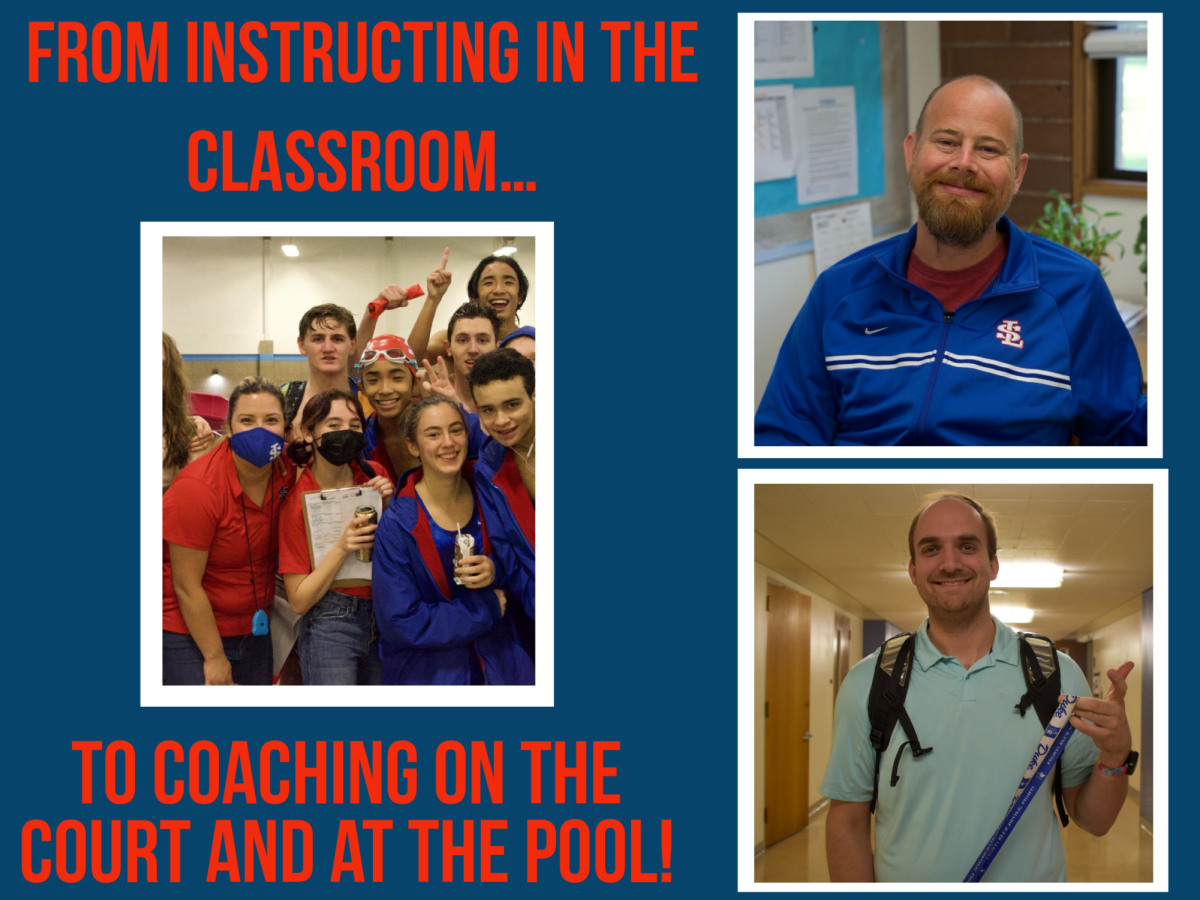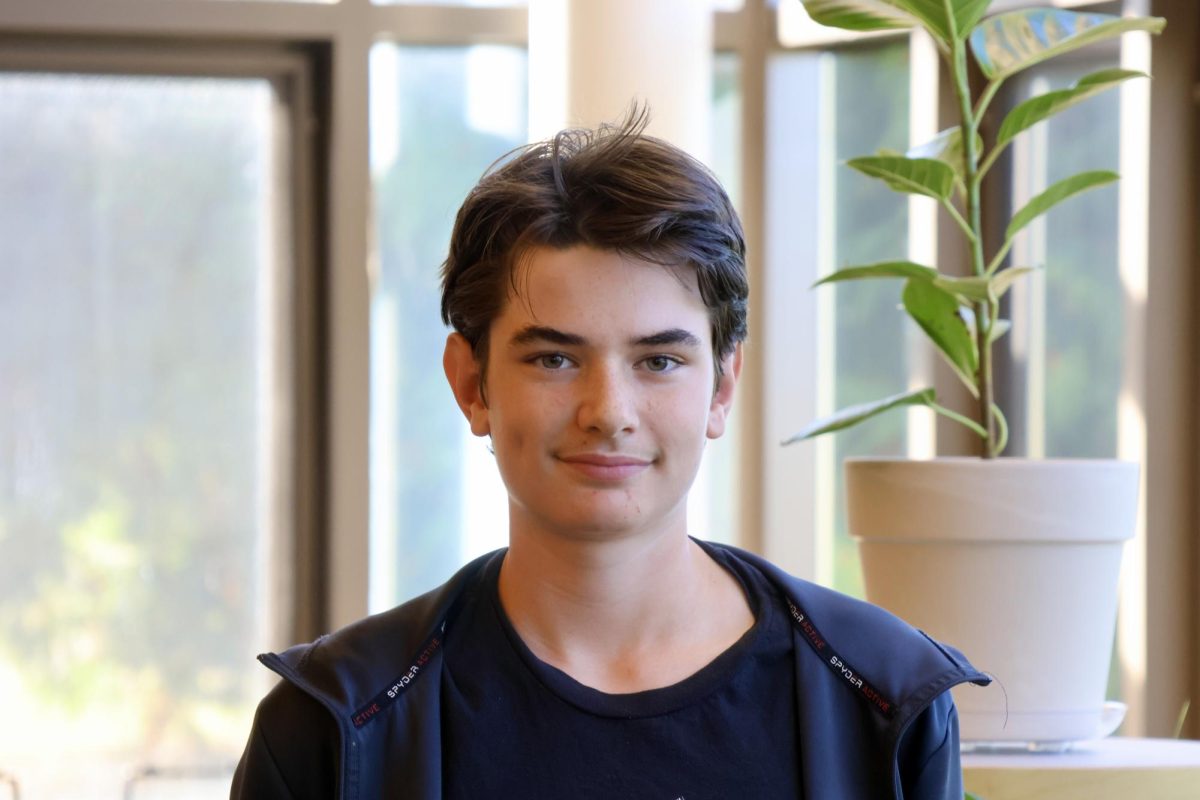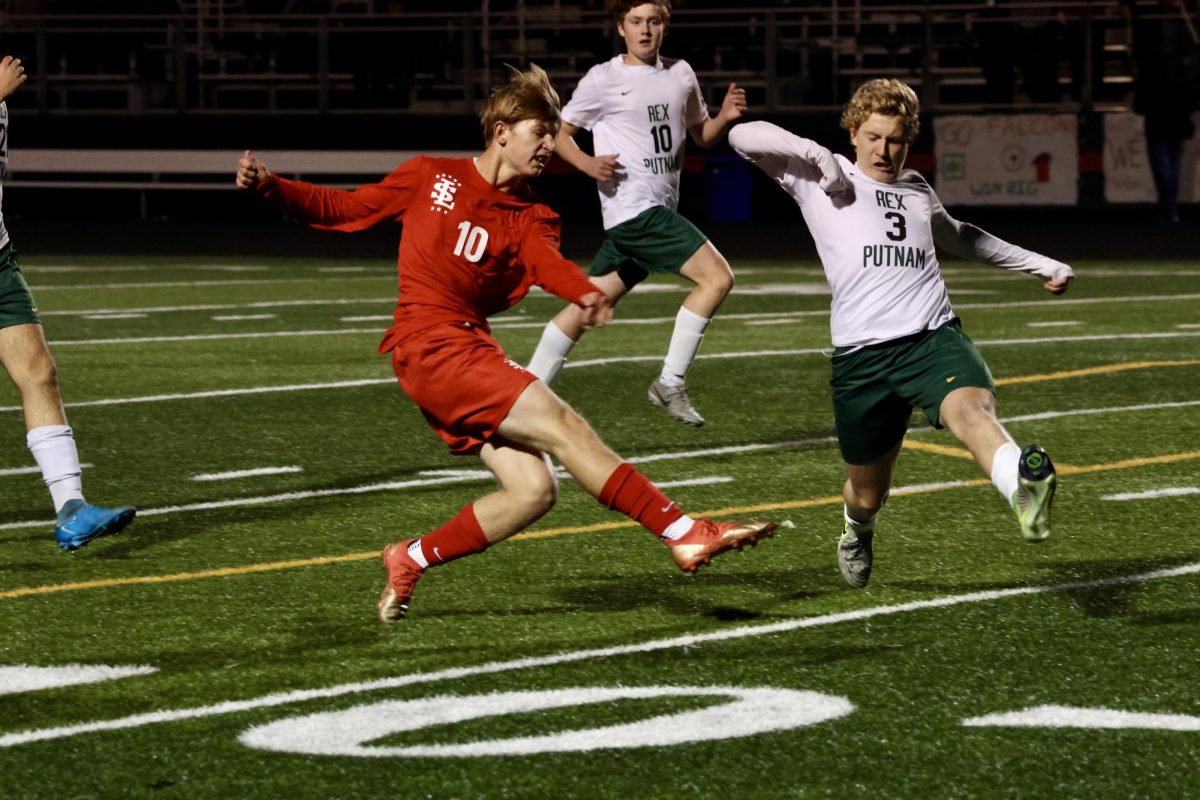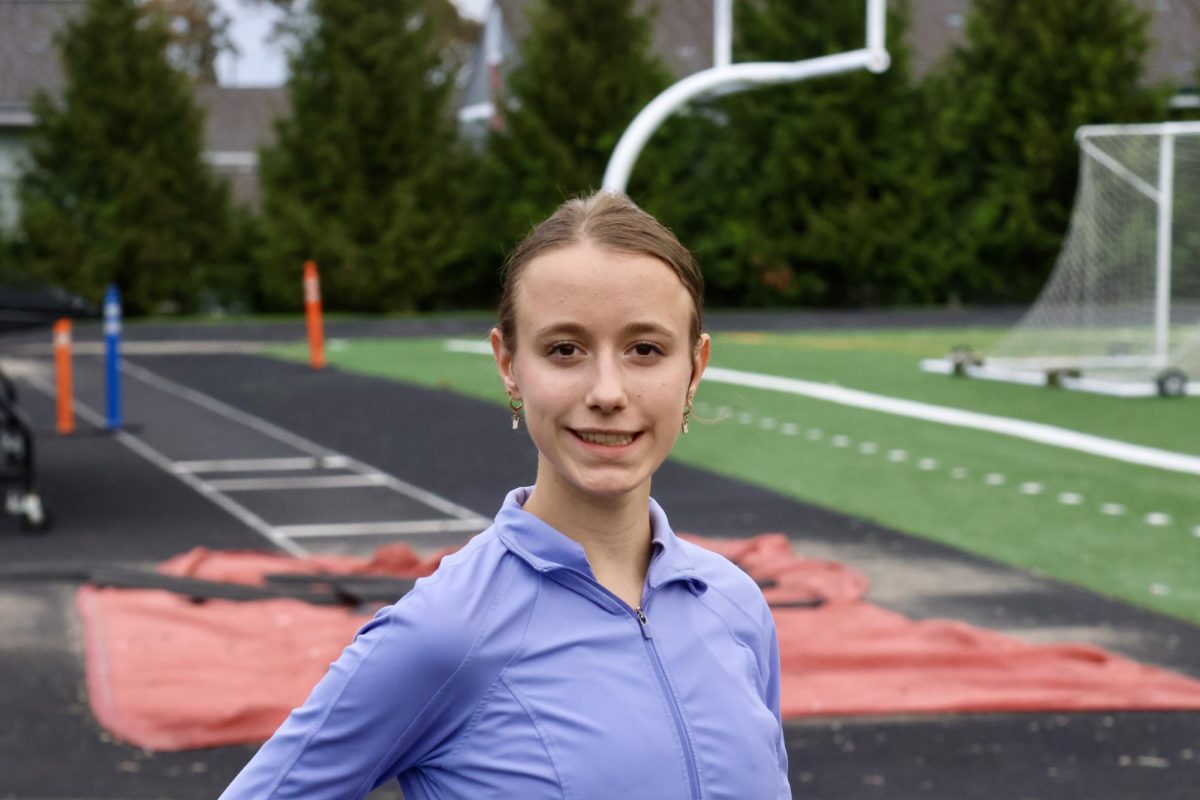Within the Lasallian community, the roles of the teachers and staff extend beyond the walls of the school. There are a number of teachers who, in addition to teaching multiple classes a day, dedicate hours after the bell rings to working with La Salle’s various sports teams in a variety of positions, ranging from head coach to assistant coach.
The three La Salle staff members that serve as coaches for winter sports came together to share their experience of being immersed in both the educational and the athletic worlds of our community.
Ms. Adriana Noesi
The Director of Student Leadership and Community, Ms. Adriana Noesi, is the Yearbook and Student Leadership teacher as well as an assistant coach for the swim team.
This is now Ms. Noesi’s third year coaching the swim team at La Salle. She was a part of the swim team when she was in high school for three years and swam recreationally in college. She wanted to get back into swimming and was very grateful that last year’s head coach and former religion teacher, Mr. Paul Collins, was willing to compromise with her busy schedule.
At swim meets, Ms. Noesi usually focuses on tracking the swimmers, keeping times, and on-deck coaching for the longer races. Since she is an assistant coach, she only misses one day of school for district competitions. This is because she does not have to attend all of the swim meets, which is helpful in maintaining her busy schedule.
When asked what the main difference between coaching and teaching is, Ms. Noesi’s answer was, “It’s very different because I’m not grading kids in swimming, and they’re really there because they chose to [be],” she said. Ms. Noesi noticed that there’s an observable difference between being required to be in a class and choosing to participate in a sport or school-based activity.
Ms. Noesi enjoys having swimmers in her classes because she gets to create a deeper relationship with them. “I get to know them on a different level,” she said. This helps Ms. Noesi to understand the student better because she gets different perspectives on how they act in the classroom versus how they act in the pool.
As an assistant coach, Ms. Noesi’s workload is “manageable,” and therefore she is able to focus on her job at school as well as being a coach without building too much stress. At times, balancing both can be a lot to handle, so having a more flexible schedule creates less stress for Ms. Noesi.
Ms. Noesi started coaching the same year she started her job as the Director of Community and Student Leadership, so she hasn’t yet experienced doing only one of her jobs. She learned how to carry out both positions at the same time from the beginning of her career at La Salle.
Ms. Noesi cares a lot about being punctual while also trying to balance the workload of teaching and coaching. “Time management is definitely something I am extra considerate of in the middle of swim season,” she said. She creates lots of to-do lists for herself to determine what can and cannot wait until another time to efficiently juggle her work while also coaching.
Alongside the difficulties and stresses that come with teaching and coaching simultaneously, there’s a balance of determination and teamwork that makes it all worthwhile, “and makes all of those challenges seem like nothing,” Ms. Noesi said.
Mr. Paul Dreisbach
English teacher Mr. Paul Dreisbach begins his days by going to school every morning and teaching English to sophomores, juniors, and seniors. Being an assistant swim coach, Mr. Dreisbach doesn’t coach every day, but on the days that he does, he leaves for the pool about thirty minutes before practice to make sure that everything is set up and ready for the swimmers.
Mr. Dreisbach, “fell into [coaching] sort of accidentally,” he said. A former principal of La Salle, Bill George, had requested that more staff members coach. Mr. Dreisbach was asked if he could coach cross country, but he said he couldn’t because he didn’t run at the time. “Hilariously, I do run now, and I hardly swim,” he said.
Having never swam as a student athlete, Mr. Dreisbach has focused on observing what swimmers do in the pool and what good swimming looks like. He has learned a lot from the head coaches at La Salle, as well as the head coaches of other teams.
For Mr. Dreisbach, the main difference between coaching and teaching is that in the classroom, students are told specifically what to do, and in the pool, it’s more up to the swimmers. “My job as a coach, as a leader, is to facilitate helping them get to those goals, and try to facilitate and foster the motivation to get to those goals,” he said.
Mr. Dreisbach said that teaching and coaching a student at the same time “sometimes gives me a better way to relate to that student and and get a better opportunity to develop a better relationship, or a deeper relationship with that person.” Because he is able to see a student in both the classroom and the pool, he gets to witness how that person’s mind works on two different levels.
Luckily, Mr. Dreisbach doesn’t think his workload is too heavy. He enjoys the relief of coaching after a long day of teaching. He likes the break from thinking about his English classes and the essays that need to be graded while he gets to focus on coaching and engaging with the swimmers.
According to Mr. Dreisbach, swim meets usually take place on Fridays and while they can vary in length, home meets usually last about two hours, while away meets can take even longer, sometimes around four hours including travel time. Fortunately, he doesn’t have to miss too much school because he isn’t required to go to all of the meets. When he does, however, he tries his best to prepare for the sub and to make sure his classes will still be productive without him being there physically.
The most stressful thing about coaching for Mr. Dreisbach is coaching a kid who has the potential to be a great swimmer, but who doesn’t apply enough effort to achieve their goals.
“I will say my favorite part of coaching is seeing a swimmer who has been really dedicated, has been really eager, who’s worked really hard, who has taken really well to the coaching and made efforts to make the changes and do the things that all of us [coaches] are suggesting for them,” Mr. Dreisbach said.
Mr. Ryan Kain
Last year, science teacher Mr. Ryan Kain made the decision to coach the freshman boys basketball team, taking his teaching skills from the classroom to the court. He utilizes the knowledge gained from his years of teaching, and experiences from his relatively new position of coaching to better fulfill both of his positions. He believes in the idea that coaching and teaching have a similar goal.
Mr. Kain previously coached soccer and basketball, and played both sports for all four years when he was a student here at La Salle. He decided to get back into coaching after COVID-19, and he’s been able to teach students of all grades both in the classroom and on the court because of it.
“Learning, whether it’s in the classroom, or on a court, or a field, is the same process of putting yourself into a situation to fail softly, for lack of a better word, make mistakes and learn from them,” Mr. Kain said.
In the end, for Mr. Kain, the goal of both is to create a community that can work together for success. The classroom effort is more individualized, and basketball is more of a team effort — even so, Mr. Kain handles them similarly.
One example of this similarity Mr. Kain gives is when he said, “Hey, team, we got some data today,” Mr. Kain said. “We got some things that we can work on. We got some things that we did well. And I say the same thing in class, like I get a quiz. I’m like alright, team, we got some data.”
Although his approaches to teaching and coaching are similar, one of the things that Mr. Kain enjoys most is seeing the different sides of the students he coaches. He has noticed that students are not always their true selves in the classroom as they are when surrounded by people who may be in their close circle of friends. When on the court he gets to see a different side brought out of his student and they get to see a different side of him.
This makes building relationships an important part of his role as a coach. He gets to know multiple dimensions of a student’s personality when they’re placed in a different environment, and that is not necessarily an experience he would be able to have if he didn’t coach and teach at once.
While Mr. Kain does appreciate the multifaceted relationships he gets to have with his students, the job of coaching basketball and teaching at the same time is taxing. It requires a ton of his time and effort, with the average workday being about 13 hours long.
The best strategy he has found for balancing all of his responsibilities has been “being open and communicating about trying to take care of yourself and trying to balance all of those things,” Mr. Kain said. “If you try to keep it all inside and just do it all you’re gonna blow up.” Whether he has to miss a day of school to go to a game or needs to reorganize, Mr. Kain is sure to make a plan and communicate it to his students and substitute.
He may have a lot on his plate, but the job is not without its rewards. On top of getting to know his students better, Mr. Kain is able to spend time doing what he enjoys. “I love sports,” Mr. Kain said. “I love the team atmosphere and culture.”










James Washburn • Feb 12, 2024 at 9:33 pm
This article is very well written and very detailed. Cudos to the writers. One of who is my first grand daughter who I love very much!!!